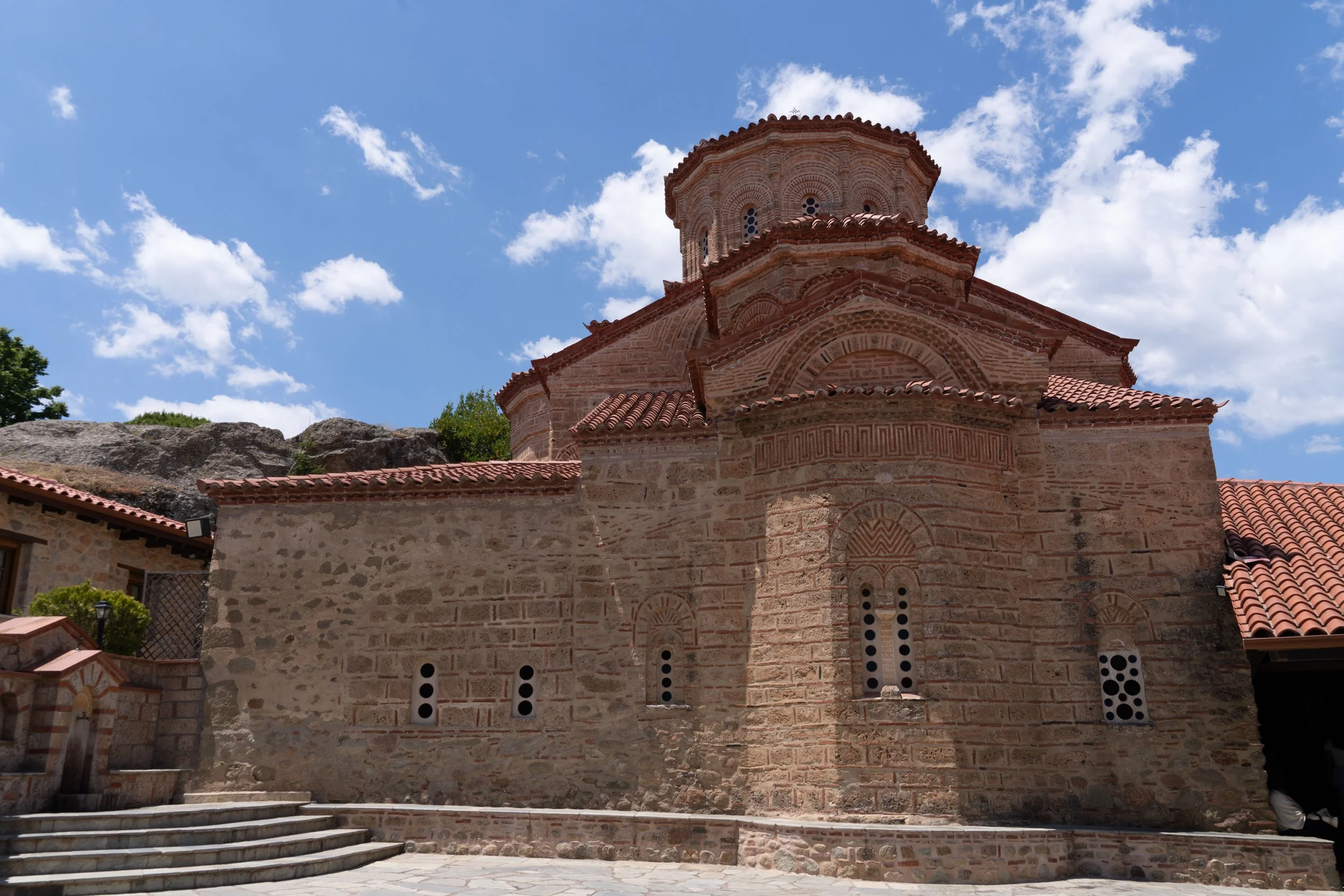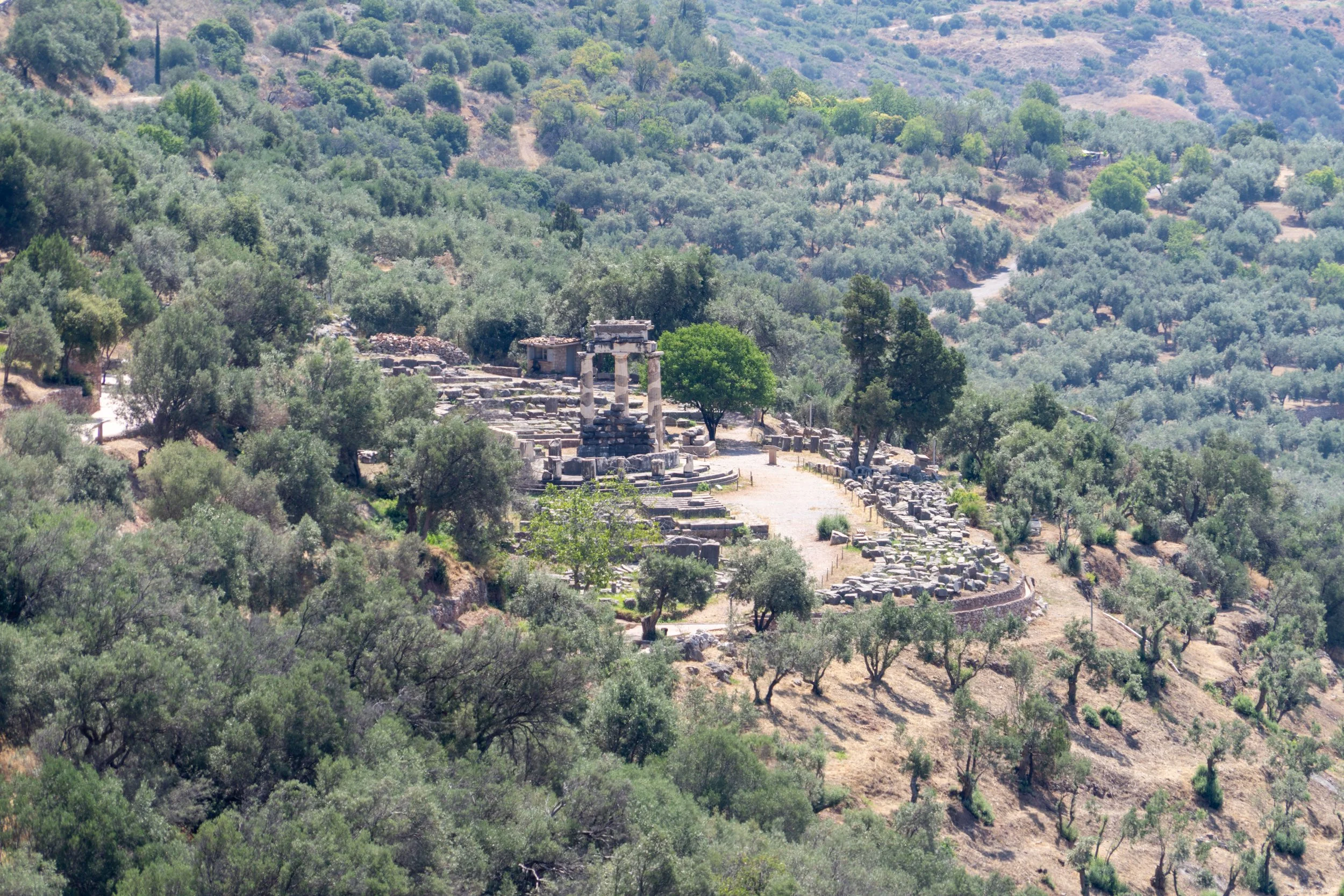Road trip through Central Greece
On the road again - with Gabi and Hans Van Hattem of The Netherlands.
The last time we were in the company of Gabi and Hans was in Australia in February, having completed our memorable road trip from Darwin to Adelaide. Now with winds still blowing it was determined it was the perfect time to try and catch up whilst we were all in Greece. All be it that they were on their boat in Gouvia Corfu and we were on Katherine in Lavrio.
Stoes Boutique Hotel Ioannina
The solution we agreed was to meet in Ioannina from where we would commence a road trip back to Lavrio. For us it entailed a short flight from Athens. For Gabi and Hans a ferry transfer with their car to Igoumenitsa from Corfu, then a short drive to Ioannina. A towns name that I still cant correctly pronounce.
Arriving at our accommodation through the back streets of Ioannina, we were welcomed and advised with pride by the staff, that our Hotel had once operated as a Market place selling herbs and spices during the 19th century. The building had been beautifully renovated with exposed stone walls and pieces of the original building still in place and on display. It was perfectly located within easy walking distance of the Ioannina castle and the water front.
Inside the castle walls on the Northern end a Mosque built by Ali Pasha in 1618 stood and contained a small museum. We have during our travels in Greece and Albania come upon many ruins from the time of Ali Pasha. Known as a tyrant he was also a successful administrator who brought to this region great wealth during his reign as Pasha of Epirus. His empire at its greatest stretched from Albania to the Peloponnese, but ultimately his success led to his demise and his death on the neighbouring island of Nisi in 1822.
In the afternoon together with Hans and Gabi we headed across to the small island of Nisi to walk the small community and visit the museum dedicated to Ali Pasha as the place in which he met his death. The restored building came complete with bullet holes in the floor that apparently brought to the end the life of Ali Pasha.







Leaving Ioannina we headed east with the first stop of the day being for the all important coffee. The recommended stop involved a small detour that was certainly worth while. The cafe was perched on the side of a hill with a cascading stream running along side it and artefacts from days gone by scattered around the site. The most impressive of which was a traditional washing machine that used the force of the water to agitate and clean and was still in use today. Not sure it would work for our small items.
Next stop Meteora which has been on my wish list for as long as we have been exploring Greece. Meteora is renown for its natural rock formations that rise out of the ground towering over the surrounding area. On top of these pillars were precariously perched Eastern Orthodox Monasteries founded from the mid fourteenth century. Originally numbering 24 in total only six remain active and open to the public to visit. We set our sights on just two.
Stopping to view the rock formation of Meteora
The Monastery of Great Meteoron sits 415m above the valley floor. It was established as a Eastern Orthodox monastery in 1356 and during the 15th century grew to become the most powerful monastery in Meteroa. The long stair climb in the afternoon heat looked somewhat daunting but thankfully was much easier to negotiate then it appeared.
Inside the monastery we were able to visit the main church built in the 16th century, a museum that housed many religious icons and scripts along with the old Kitchen, wine and carpentary area. This though was just a very small area of this large monastery that would be amazing to wander and explore.









Our accommodation in Meterora was chosen for its view, which was stunning in the evening light, but the pool given the heat was definitely an added bonus.
Monastery of Varlaam as seen from the Monastery of the Great Meteora
The following morning we took in the Monastery of Varlaam. This monastery began in 1350 when a man name Varlaam dedicated his life to establishing three churches on the rock. After his death the site fell into disrepair for over 200 years until two wealthy brothers from Ioannina set about building the monastery in the early 1500’s.
Access originally was by ladders attached to the cliff face until a tower was built from which a net was lowered and goods, supplies and monks could be hoisted. Thankfully today there was a small bridge to cross and just a lot of steps to climb. We were all most impressed with this Monastery, its gardens, museum with scripts and religious treasures and particularly the beautiful church lined with frescoes.









Whilst exploring the region and taking photos of the scenery we were reminded that you should not only look out but also down. We found this guy by the roadside happily feasting on the pollen of a thistle.
Taverna Galaxidi
Leaving Meteora we headed South to the Gulf of Corinth and the village of Galaxidi that had very much impressed us when we visited last September by sea. It was to be our base from which to visit the historic site of Delphi.
We have visited many ancient sites in Greece including the Acropolis and the island of Delos but we both agreed that visiting Delphi was a different experience to any previous site we had visited. Firstly we were surprised that it sat so high on the mountainside overlooking olive trees planted all the way to the sea. The ruins were also spread over multiple sites several of which looked to be under restoration work, another anomaly as sadly many ruins we have visited have shown signs of work previously underway but the infrastructure had been abandoned a long time ago. It was actually pleasant to walk amongst the ruins with our audio guide. At no stage did we feel the site to be overcrowded as was experienced at the Acropolis.
Our first stop was the Delphi museum before walking up through the ruins of Delphi with its temple Ruins, Athenian Treasury, amphitheatre and at the highest point the largest stadium at almost 180m in length that we have seen.
Legend stated that Zeus “released two eagles from the opposite sides of the world and they crossed paths in the sky over Delphi establishing it therefore to be the centre of earth.” In the 4th century BC the Temple of Apollo was built and leaders and pilgrims would travel from far to consult with a legendary oracle on the course of action they should take. The ruins were first uncovered in 1860. In 1891 the village of Kastri was relocated by the Greek government to allow for for further exploration, discovery and conservation of Delphi that continues today. It was certainly impressive if not a little overwhelming. Definitely time to brush up on ancient Greek history.
Farewell for this trip.
Back onboard Katherine and our replacement gas strut for the anchor successfully installed it was time for Gabi and Hans to return to Corfu and for us to go sailing.
A lot of fun had with friends once more.





































